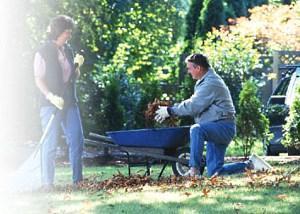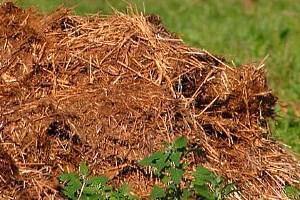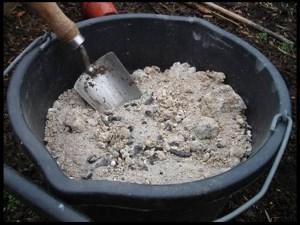Correct feeding of gooseberries after harvest
 One of the most common berry bushes that can be found on people's backyards and summer cottages is the gooseberry. The berries of this plant have an attractive sweet and sour taste and contain a large amount of vitamins and amino acids. There are about 50 varieties
of this useful plant, which differ in the peculiarity of growth, the taste of berries and their shape. On average, from one bush, which is 3-4 years old, in one good season, you can get up to 10 kg. berries, which allows the summer resident not only to feed his family, but also to make jam and compote from gooseberries.
One of the most common berry bushes that can be found on people's backyards and summer cottages is the gooseberry. The berries of this plant have an attractive sweet and sour taste and contain a large amount of vitamins and amino acids. There are about 50 varieties
of this useful plant, which differ in the peculiarity of growth, the taste of berries and their shape. On average, from one bush, which is 3-4 years old, in one good season, you can get up to 10 kg. berries, which allows the summer resident not only to feed his family, but also to make jam and compote from gooseberries.
Proper care of gooseberries is the key to a good harvest
However, you need to understand that the yield of every garden plant, including gooseberries, directly depends on the amount of nutrients in the soil, so this plant needs proper care. Timely feeding of gooseberries after harvesting plays an important role in the life of the plant, since during flowering and fruiting, the plant spends a lot of energy on the formation of berries, as a result of which it draws phosphorus-potassium elements from the soil. An experienced owner necessarily includes competent feeding of gooseberries with the necessary nutrients in the complex of autumn field work.
Post-harvest gooseberry processing
In general, after harvesting, the main task of the gardener is to competently prepare the bush for wintering, prune it, and also add the necessary nutrients to the soil. In addition, you must not forget to water the gooseberries abundantly for the winter, which will provide the plant with the ability to freely receive moisture in the winter. Despite hibernation, a lot depends on the level of moisture in the soil, including the immunity of the bush, which directly depends on its ability to resist sores and pests. That is why a well-done feeding of gooseberries in autumn is very important, since the fruiting of the plant next year directly depends on this.
Feeding gooseberries in the fall includes the following:
- Complex weeding in the near-trunk circle;
- Thorough removal of plant residues and fallen leaves;
- Abundant watering (about 3 buckets of water for each bush);
- Pruning old branches that are over 5 years old;
- Loosening the soil in the aisles and around each bush;
- Application of nitrogen-mineral fertilizers;
- Mulching the earth.
It is important to understand that almost all gooseberry varieties are susceptible to such a dangerous disease as powdery mildew, which is caused by a harmful fungus. In order to prevent it from overwintering and infecting the plant next year, it should be sprayed with Bordeaux liquid.
Correct feeding of gooseberries together with such spraying will significantly increase the plant's immunity, as well as enhance its frost resistance.
Biological features of gooseberries
 Any gooseberry really needs a significant amount of nitrogen, and therefore the best option here is cow or bird manure
Any gooseberry really needs a significant amount of nitrogen, and therefore the best option here is cow or bird manure
How to feed gooseberries?
 It should also not be forgotten that it is also recommended to add at least 1 kg for each bush since autumn. humus, as well as 1 liter of wood ash. In addition, 2 tbsp is usually applied for digging plants. spoons superphosphateas well as potassium chloride. To protect the roots of the plant from severe frosts, it is recommended to pour a layer of peat or sawdust under the stem circle of each plant.
It should also not be forgotten that it is also recommended to add at least 1 kg for each bush since autumn. humus, as well as 1 liter of wood ash. In addition, 2 tbsp is usually applied for digging plants. spoons superphosphateas well as potassium chloride. To protect the roots of the plant from severe frosts, it is recommended to pour a layer of peat or sawdust under the stem circle of each plant.
But in the spring you need to remember to rake out this mulching layer in order to accelerate the heating of the soil, thereby helping to remove the plant from a dormant state.
Soil analysis is an important indicator for competent gooseberry cultivation.
 You need to understand that refueling a plant in autumn with organic and mineral fertilizers should take into account the type of soil on which the plant is grown. It is enough to know that gooseberries love slightly acidic soil, and therefore the best option for them is a soil acidity level of pH 6.7, which is usually found on drained medium loam.
You need to understand that refueling a plant in autumn with organic and mineral fertilizers should take into account the type of soil on which the plant is grown. It is enough to know that gooseberries love slightly acidic soil, and therefore the best option for them is a soil acidity level of pH 6.7, which is usually found on drained medium loam.
However, if the acidity of the soil is not lower than pH 5.5, then the plant is also able to grow and develop well, but requires annual application of appropriate fertilizers. The more alkaline the soil in the garden, the more top dressing is necessary to achieve good and stable fruiting.
Summing up, we can say that the rules for feeding gooseberries include the sequential implementation of the entire complex of measures, from weeding to the introduction of nitrogen and mineral substances, humus and calcium into the soil. The better the feeding is done, the more abundant the harvest will be next year.